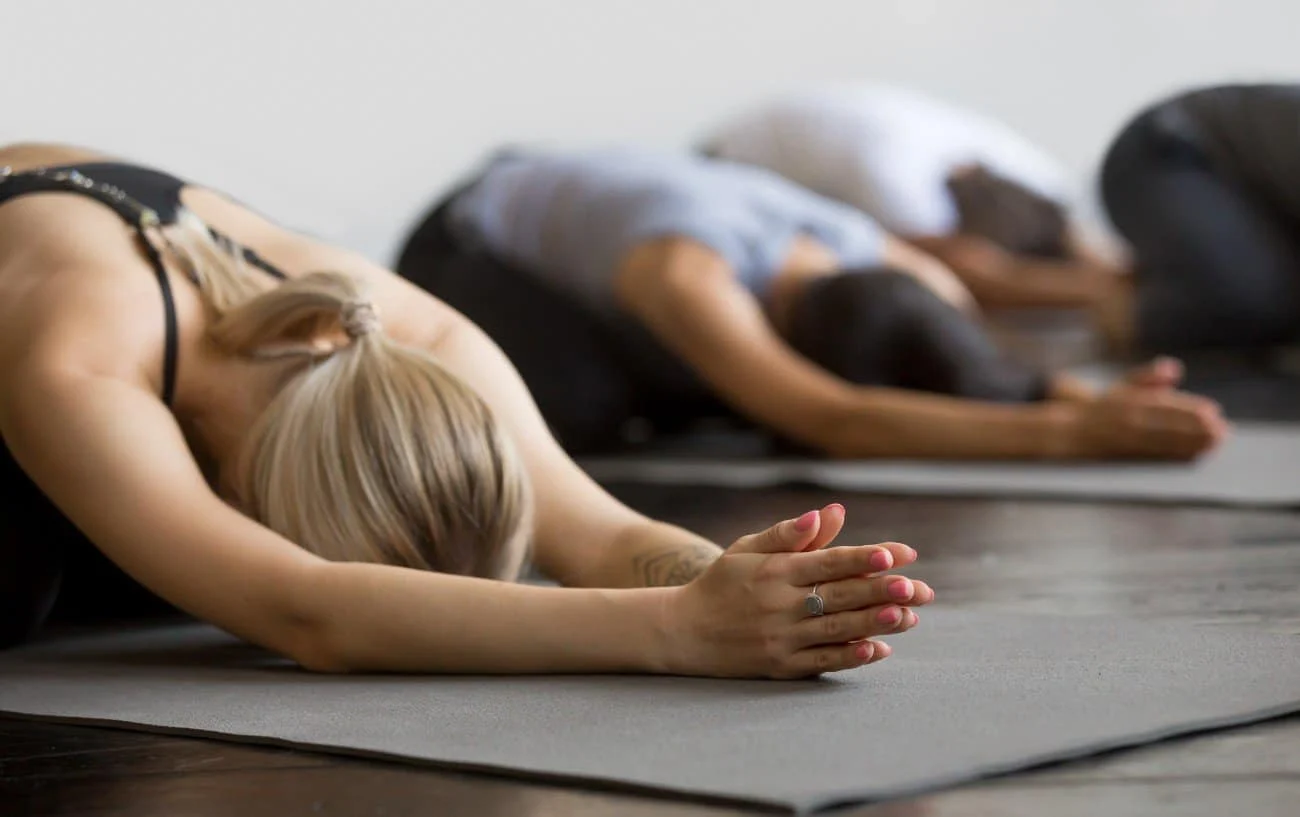Restorative Yoga: Restorative Yoga for Stress Relief

What is Restorative Yoga?
Restorative yoga is practicing asanas held in each position for longer periods than in regular yoga exercise sessions, frequently with props like folded blankets to relax the body, lower stress levels, and frequently get the body ready for pranayama.
The physical postures we adopt during practice are simply a small part of what yoga is all about.
In an authentic yoga practice, we establish a connection with our true inner selves.
The foundation of the ancient yoga tradition that directs us on the path to reuniting with our spirit is made up of yoga asanas and breathing exercises carried out in a state of mental and physical calmness.
We can truly relax by practicing restorative yoga.
We can thoroughly rejuvenate every cell in our body and gently nudge it into the state of parasympathetic nervous system arousal thanks to the application of support.
The precise combination of physical and mental stimulation that restorative yoga offers enables us to achieve a deeply relaxed state.
Origins
The foundation of restorative yoga is B.K.S. Iyengar’s philosophy.
It was created in the US during the 1970s by Judith Lasater, an Iyengar student. The main goal of restorative yoga is to speed up the healing process following an illness, injury, or accident.
According to reports, it is perfect for restoring quality of life to people who are close to burning out due to the stress of the fast-paced modern lifestyle.
Restorative yoga activates the parasympathetic nervous system, which lowers blood pressure, relaxes the body, and slows the heart rate.
The Purpose of Restorative Yoga
Restorative yoga aims to help the body more readily activate the parasympathetic nervous system and achieve a state of relaxation.
By gently and carefully allowing the body to alternate between movement and silence, Restorative Yoga aims to return the body and mind to a natural state of tranquillity and harmony, as the word “restore” denotes.
Because the poses don’t need a lot of stretching or effort, restorative yoga is also frequently referred to as active relaxation.
Additionally, the body has abundant time to enter a deep level of relaxation as we maintain the poses for a more extended period.
The body’s systems become balanced, the mind calms down, and the breathing becomes deeper.
Body and mind are nourished and calmed by restorative yoga.
As a result, a daily practice strengthens and heals a weak and exhausted body and leads to deep emotional recovery.
Thus, we can say that restorative yoga is not a fitness-focused practice but a more therapeutic one.
How to Practice Restorative Yoga?
Letting go and grounding are the two fundamental goals of restorative yoga.
To achieve our objective in restorative yoga, props are necessary for deep relaxation. Props include both simple props that you can find at home. No new distinctive yoga props are required.
If you are practicing restorative yoga at home, then the following common props are required for practicing:
- Yoga mat
- One chair/stool
- Small & soft hand towels
- Two to three fluffy bolster
- A strap or belt for your pants or robe
- One 15- or 150-gram soft cushion
- Two bricks of yoga or two chunky size books
How Long a Restorative Pose Can Be?
The final relaxation in Savasana can last up to 25 minutes, and restorative yoga positions are sustained for five to thirty minutes.
Who Must Try to Practice Restorative Yoga?
Restorative yoga’s most significant benefit is that it can be modified to suit everyone, regardless of age or level of expertise.
Everyone can practice the poses thanks to the numerous supports.
Each pose has a limitless number of variants, ensuring that everyone may find relaxation in each one.
Astonishing 5 Health Benefits of Restorative Yoga
1. Digestion is Improved
Non-essential bodily processes, including digestion, cell reproduction, gut, and cell proliferation, are inhibited when the body is under stress.
By readjusting the neural system, restorative yoga aids digestion in carrying out its fundamental activities and the intestine in absorbing nutrients and producing waste.
2. Controls Blood Pressure
While moments of calm slow down the heartbeat and maintain blood pressure at healthy levels, situations of stress cause blood pressure to rise and disrupt its balance.
3. Supports the Body When it’s Grieving
After a severe tragedy, such as the demise of a loved one, an accident, emotional trauma, or illness, restorative yoga is beneficial.
4. Aids in Weight Loss
We learn to be more attentive through restorative yoga, which reduces the urge to overeat.
Regular practice, even just 20 minutes a day, raises our awareness of our behaviour, teaches us to love ourselves, and lessens the desire to use food or “junk food” to make up for the misery of modern life.
It is a terrific place to start when redefining our dietary and lifestyle choices.
5. Enhances Mental Clarity, Focus, and Memory
Numerous scientific studies demonstrate how profound focus can only occur when the neurological system is in balance, and the mind is sharp and under control, not when it is agitated or anxious.
The Final Note
You must be thinking…here’s a quick takeaway.
Restorative yoga is slow, and it will show gradual results. Then, in this case, how can each yoga student benefit from this practice?
Any active student will benefit from increased performance and be able to lead an active life without becoming exhausted, thanks to restorative yoga, which aids in regenerating our body’s tissues.
Lastly, through a regular practice of observation and detachment, restorative yoga will strengthen and rationalize their mindset.
And all these are valuable elements to learn in the journey of self-discovery.
